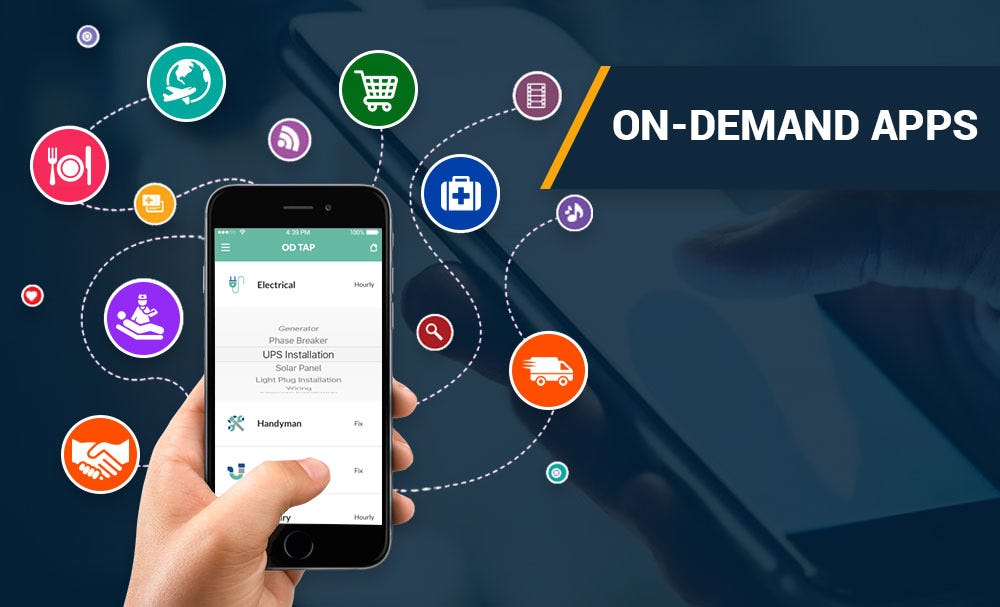The way we access services has undergone a paradigm shift in recent years, thanks to the rise of on-demand apps. From food delivery to transportation, these platforms have transformed industries and revolutionized consumer expectations. One sector that has seen significant disruption is home services, particularly with the emergence of on-demand handyman apps. These platforms connect users with skilled professionals for a wide range of household tasks, offering convenience, reliability, and efficiency like never before.
The Need for On-Demand Handyman Services
Home maintenance and repairs are an integral part of homeownership, yet finding reliable and affordable help can be a daunting task. Traditional methods often involve lengthy searches, multiple phone calls, and uncertainty about service quality and pricing. On-demand handyman apps address these pain points by providing a streamlined, transparent, and user-friendly solution.
How On-Demand Handyman Apps Work
The premise of an on-demand handyman app is simple yet powerful. Users download the app, create an account, and browse through a list of available services, which can include plumbing, electrical work, carpentry, painting, appliance repair, and more. They can specify the type of task, desired appointment time, and location.
On the other side, skilled professionals (handymen) register on the platform, undergo verification and background checks, and set their availability. When a user requests a service, the app matches them with the nearest available handyman with the required skills. The user can view the handyman’s profile, ratings, and reviews before confirming the booking.
Read More: On Demand House Cleaning App Development Services
Key Features of On-Demand Handyman Apps
-
User Profiles and Authentication: Users create profiles with personal information, payment details, and preferences. Secure authentication ensures data privacy and safety.
-
Service Selection: A comprehensive list of home services is available for users to choose from, with detailed descriptions and pricing information.
-
Real-time Tracking: Users can track the handyman’s location and estimated time of arrival, enhancing transparency and convenience.
-
In-App Communication: Chat or call features allow users and handymen to communicate directly for task clarification or updates.
-
Booking and Scheduling: Flexible booking options enable users to schedule appointments based on their availability, with reminders and notifications.
-
Rating and Reviews: After the service is completed, users can rate the handyman and provide feedback, fostering accountability and service quality.
-
Payment Integration: Seamless integration with popular payment gateways ensures secure and hassle-free transactions, with options for cashless payments.
-
Emergency Services: For urgent repairs or maintenance issues, users can access emergency services for quick assistance.
Benefits of On-Demand Handyman Apps
-
Convenience: Users can book services anytime, anywhere, eliminating the need for extensive research or waiting for appointments.
-
Quality Assurance: Verified professionals with reviews and ratings ensure reliable and high-quality service delivery.
-
Cost Transparency: Upfront pricing and transparent billing prevent surprises and disputes, promoting trust and satisfaction.
-
Time Savings: Quick booking and efficient service reduce downtime and inconvenience for homeowners.
-
Safety and Security: Background checks, insurance coverage, and secure payments enhance safety measures for both users and handymen.
-
Business Opportunities: For handymen, the app provides a platform to showcase their skills, gain exposure, and expand their client base.
Challenges And Solutions
While on-demand handyman apps offer immense value, they also face challenges such as managing supply and demand, ensuring consistent service quality, and handling customer complaints. Implementing robust algorithms for matching tasks with available handymen, investing in training and support for professionals, and implementing responsive customer support systems are key strategies to overcome these challenges.
Future Trends and Innovations
The future of on-demand handyman apps is promising, with potential innovations such as AI-driven task recommendations, IoT integration for smart home services, virtual reality (VR) consultations, and blockchain-based trust and verification systems. These advancements will further enhance user experience, increase operational efficiency, and drive industry growth.
Conclusion
On-demand handyman apps are reshaping the home services industry, offering a convenient, reliable, and efficient solution for homeowners and professionals alike. With user-friendly interfaces, robust features, and a focus on quality and safety, these platforms are poised to continue their exponential growth and make a lasting impact on how we access and experience home maintenance and repairs. As technology continues to evolve, so too will the capabilities and possibilities of on-demand handyman apps, ushering in a new era of convenience and innovation in the service economy.


